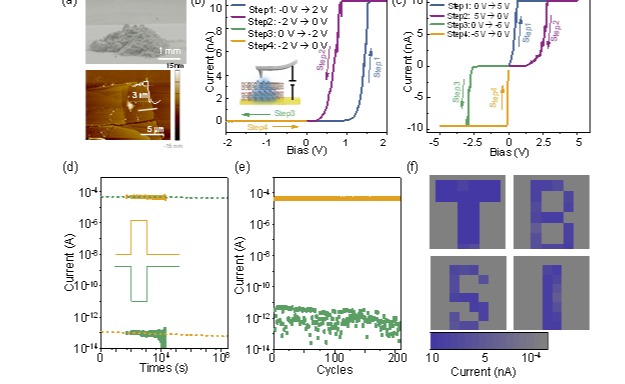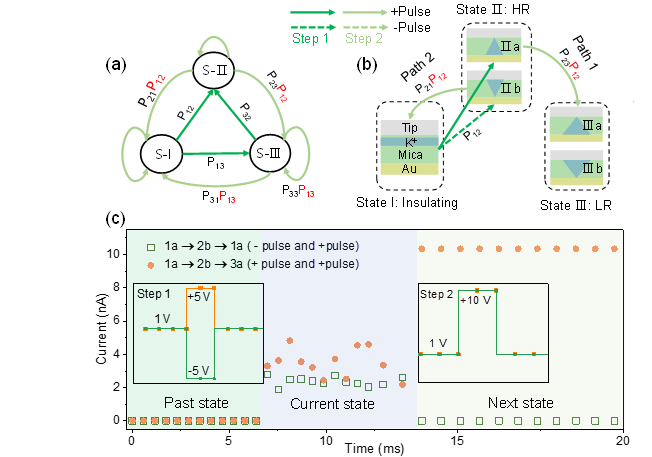Researchers from Tsinghua Shenzhen International Graduate School have realized a non-Markov chain algorithm in a two-dimensional (2D) mineral-based resistive random access memory (RRAM) device. The breakthrough was recently published in the journal Science Bulletin.
Non-Markov algorism plays a significant role in predicting future states of a system. Compared with Markov chains, non-Markov chains are closer to reality and more conducive to running complex algorithms such as data prediction. However, their applications are limited, as devices with non-Markov functions traditionally have a complex structure and high power consumption. 2D RRAM devices have been gaining attention for their potential in next-generation computing systems due to their high operation speed, integration density, and application potentials in algorithms. Currently, more research is needed to realize non-Markov functions in 2D RRAM devices in order to achieve more complex algorithms.

Figure 1. Electrical characteristics of RRAM based on 2D mineral mica.

Figure 2. The realization of a non-Markov chain in a single 2D mineral RRAM.
For the first time, the team led by Prof. Hui-Ming Cheng and Associate Prof. Bilu Liu has successfully achieved the non-Markov chain algorithm in a single 2D mica-based RRAM with three states. The team found that 2D mica had excellent ionic conductivity and revealed the characteristics of inner ion (K+) migration within the material. The migration of the inner K+ contributes to a high on/off ratio of 103, long retention time of more than 108 s, as well as the high stability and reliability of the 2D mica-based RAAM device.
This study demonstrated the resistance characteristics of 2D mineral-based RRAM devices under electric field control, revealed its resistance change principle, and proposed feasible methods for implementing non-Markov chains in such devices, which may have applications in areas of artificial intelligence and big data algorithms. The study also highlighted the great potential of 2D mineral materials for electronics.
This work was supported by the National Natural Science Foundation of China, Guangdong Innovative and Entrepreneurial Research Team Program, and the Bureau of Industry and Information Technology of Shenzhen.
Link to full article: https://doi.org/10.1016/j.scib.2021.04.025
Writer: Yujie Sun
Editors: Karen Lee, Li Han

